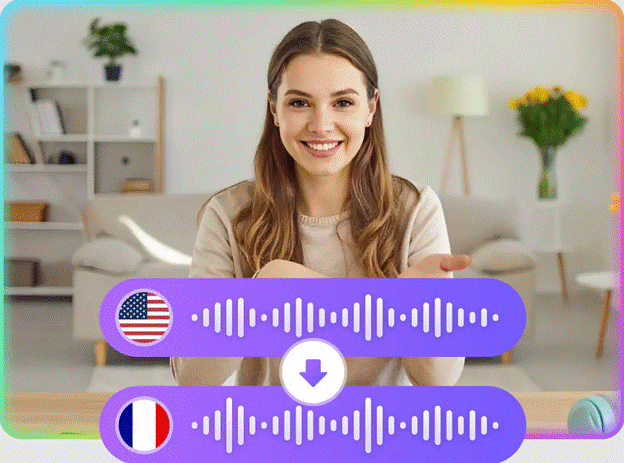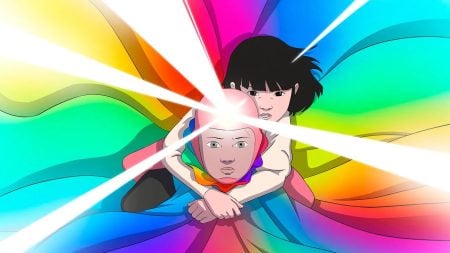Imagine you just finished creating a fantastic video for your audience. It’s engaging, informative, and perfectly edited—but then it hits you: most of your viewers don’t speak your language. Traditionally, you’d need voice actors, studios, and weeks of post-production to make your content accessible globally. But thanks to AI dubbing, there’s a smarter, faster, and more affordable way.
From YouTubers to marketers and educators, AI dubbing is changing how creators share their stories with the world. Let’s dive into what it is, how it works, and how you can use it effectively.
What Makes AI Dubbing Different?
At its core, AI dubbing uses artificial intelligence to turn spoken content into natural-sounding voiceovers—sometimes in multiple languages. Unlike traditional dubbing, which involves recording, editing, and syncing human voices, AI dubbing automates the entire process with remarkable speed and accuracy.
Tools like the Free AI Text-to-Speech Generator allow creators to convert written scripts into lifelike audio. Whether you need a friendly conversational tone or a professional narrating voice, AI-generated audio can meet your needs without hiring a studio.
And if your content needs translation? That’s where an AI Audio Translator comes in. It automatically converts your original speech into another language while keeping the meaning, tone, and context intact.
How AI Dubbing Works (Step by Step)
Understanding the process makes it clear why AI dubbing is a game-changer:
- Speech Recognition: AI listens to your original audio and transcribes it accurately.
- Translation: If needed, AI translates the text into the desired language without losing context or style.
- Voice Synthesis: Using text-to-speech, the AI generates a voiceover that sounds natural, even mimicking emotions and pauses.
- Synchronization: Finally, the AI aligns the new audio with your video, ensuring smooth lip-sync and timing.
This workflow saves weeks of work and cuts down costs significantly, all while producing professional-quality results.
Why Creators Are Switching to AI Dubbing
Here’s why AI dubbing isn’t just a nice-to-have—it’s becoming essential:
1. Speedy Production
What used to take days or weeks can now be done in hours. You can release multilingual content faster than ever.
2. Lower Costs
No need to hire multiple voice actors or book a studio. AI tools provide professional audio at a fraction of the cost.
3. Global Reach
By creating content in multiple languages, you can connect with viewers worldwide, building a more diverse and engaged audience.
4. Consistent Quality
AI dubbing ensures your tone, pacing, and style remain consistent across languages—a crucial factor for brand messaging or educational content.
Real-Life Examples
- YouTube Creators: Many independent creators are now uploading videos with AI-generated voiceovers in Spanish, French, and Japanese, reaching audiences they couldn’t before.
- E-Learning Platforms: Teachers and online course creators are dubbing lectures into multiple languages, making learning accessible globally.
- Marketing Campaigns: Brands can launch multilingual ads without multiple recording sessions, maintaining the same emotional impact and style.
These examples prove that AI dubbing is not just a tech gimmick—it’s a practical tool that opens new opportunities.
Practical Tips for Getting Started
If you’re considering AI dubbing, here’s how to make it work for you:
- Choose Voices Carefully: Test different AI-generated voices to see which aligns with your content’s tone.
- Check Translations: While AI translators are powerful, review them to ensure cultural nuances are preserved.
- Fine-Tune Audio: Sometimes, small manual edits can improve timing, clarity, and emotional expression.
- Test Playback on Multiple Devices: Your audio may sound different on headphones, speakers, or phones, so check for consistency.
Following these tips ensures your content is professional and engaging, no matter the language.
What the Future Holds
AI dubbing is evolving fast. Here’s what’s on the horizon:
- Real-time dubbing: Imagine live webinars automatically translated and dubbed for international participants.
- Emotionally intelligent voices: AI that can capture laughter, sarcasm, or excitement naturally.
- Integration with gaming and VR: Multilingual immersive experiences that feel fully native to the player.
The potential is enormous, and early adopters are already reaping the benefits.
Conclusion
AI dubbing is more than just a time-saver—it’s a tool that enables creators to think globally from day one. Whether you’re producing YouTube content, e-learning courses, or marketing campaigns, tools like Free AI Text-to-Speech Generator and AI Audio Translator make professional multilingual content achievable with minimal effort.
In a world where connecting with audiences everywhere matters more than ever, AI dubbing gives you the power to break language barriers and reach viewers like never before.
Sandra Larson is a writer with the personal blog at ElizabethanAuthor and an academic coach for students. Her main sphere of professional interest is the connection between AI and modern study techniques. Sandra believes that digital tools are a way to a better future in the education system.




![‘Jay Kelly’ Review – Noah Baumbach Makes A Case For The Magic Of Movie Stardom [NYFF 2025] ‘Jay Kelly’ Review – Noah Baumbach Makes A Case For The Magic Of Movie Stardom [NYFF 2025]](https://cdn.geekvibesnation.com/wp-media-folder-geek-vibes-nation/wp-content/uploads/2025/11/Jay-Kelly-JKELLY_20240523_15320_C2_R-300x180.jpg)

